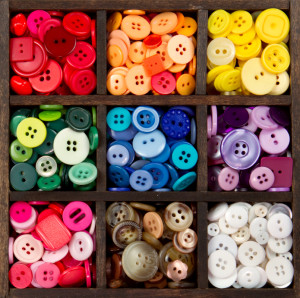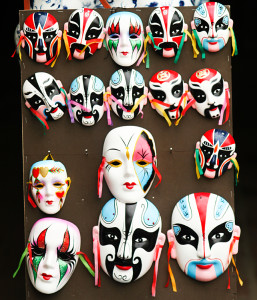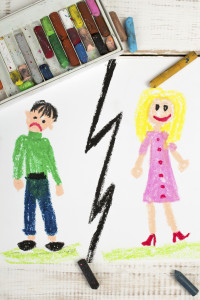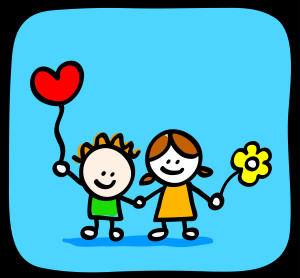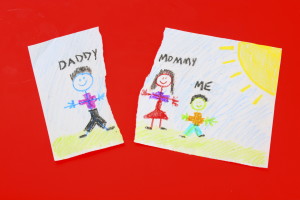How Strong Are You? “You never know how strong you are until being strong is your only choice,” says Bob Marley. I recently was put to this challenge, having to face, endure, fear and recover from major
surgery. I’m usually a private person, so following a peer’s suggestion to write this blog post is a challenge, itself. This is about facing fear and choosing being strong as my only choice. I hope you will benefit from my experiences and the lessons I learned.
My first challenge to be strong was to trust my intuition by saying “Wait” to the surgeon, who expected (but did not find) the worst. I didn’t want to miss the healing retreat that I had scheduled months before I even knew I’d need surgery. So against medical advice, I delayed the surgery for 2 weeks. Although the retreat in California was spiritually healing, when I returned to Denver the calm disappeared and the fear returned – I, again, could not easily concentrate, sleep, relax, eat or meditate the fear away. But being strong was my only choice.
Another choice was making the effort to reach out and ask for help. Some friends came forward and others retreated. A private person, I created a hidden facebook group, where I requested only funny and inspirational thoughts. I refused negativity.
Being strong was the only choice I had at the hospital. I had to ask for help when I needed it. Reaching out for help challenged the part of me that doesn’t like to bother people. But if I needed to get out of bed, I needed to have help. This led to what I call my hospital temper tantrum. My friends and clients know me as a calm, patient person. One night, however, when I could not get help, I got scared – and angry! What if I had an emergency and no one came! So, I did what I could think of to get attention – I took off my oxygen sensor! But that didn’t work! Finally, I got myself out of bed and made it ½ way across the room to the door, which was as far as my lines could get me, and started yelling for help. Even as I write this 6 weeks later, feelings of trauma come back up. Thankfully someone did hear me. The nurse was not at all happy with me. Believe me, I was not happy with him either! I had not been told me that the nurse button on the side of the bed was ‘never’ connected. The next morning my doctor agreed that every action I’d chosen was logical. So, sometimes the best choice is to break the rules. Especially when feeling scared and angry. When being strong is your only choice.
To be strong, I chose to take control of what I could, and to surrender the rest. – I wouldn’t let myself feel helpless at the hospital. But I did feel frustrated and thwarted. I did my best to stay as independent as possible. ‘Helpless’ did follow me home, however, in the form of ‘what if’ thoughts.
I had to embrace fear to bring it down to size. – It was an enormous relief to not receive the big scary diagnosis, but there were specific times when I did not know what would happen next, or how to feel better. One morning plenty of nurses rushed to my room because a technician raised a ruckus in the hallway when I wouldn’t let him in, unexplained and unannounced. Fear followed me home. I didn’t know which post-surgery symptoms were normal and which were not. I ended up having to be readmitted to the hospital. I experienced post-surgery stress when I thought about the enormity of the surgery and hospital experiences.
I had to learn to love all of myself to be strong. The recovering parts, the healthy me. Staying home for 5 weeks made it an emotional effort to begin to socialize. I had little energy to call friends. If a waitress looked at me wrong I’d burst into tears. This was not me. I worried about symptoms. You name it.
When I was anxious I did art therapy on myself. I called someone, breathed, meditated, laughed with the dog.
Being strong was not a choice, so I chose to celebrate small accomplishments. Fatigue mimicked depression. I knew I wasn’t depressed. But I didn’t feel ‘strong’. I had no motivation, no energy. I recently looked up post-surgical recovery and read that I should not have become “a couch potato in front of the television”. Whoever wrote that must never have had surgery! I initially had no energy to do much else! But I knew that NOT being strong was not a choice. Thankfully, my dog wanted to walk, and I slowly increased the distance. To overcome the fear thought, ‘OK, I walked a block, I must be tired” I began to drive to a duck pond and walked around it, stopping to sit on different benches. My dog definitely liked this. I think she kept planning dinner! I avoided even familiar groups because of the emotional effort of having to explain the surgery and re-experience the trauma. I had no desire to go into my studio and do art work. That did return, when I received a painting commission. I also did art therapy on myself, drawing a picture of trauma and then ‘healing the drawing.’
Finally, after 5 weeks I pushed the envelope and returned to my office in Aurora and the open art studio I facilitate at The Center for GLBT.
I am filled with gratitude. I did not have the scary diagnosis. I am healing. Friends sent cards, brought meals, went grocery shopping. When I was down, they reminded me that I am alive. That I was strong. My daughter was my heroine throughout. I received help from a trauma expert. My pup learned not to jump on me! I never lost my spirituality. I am grateful for the clergy who prayed with and for me. The sun still shines and the duck pond is beautiful.
So, how can this very personal post help you? Here are some things I learned about choosing to be strong.
-
- Trust your intuition. Have you ever sensed something was wrong but didn’t act on it?
- Take control of whatever you can and surrender the rest. What are some things you do have control over and what can you chose to surrender?
- When you are filled with fear, name it. Invite it in and it will shrink down to size.
- Love all of yourself. So much easier to say than do. I’d love to hear how you experience this.
- Reach out to loved ones.
- Ask for help when you need it and smilingly refuse it when you don’t.
- Celebrate small accomplishments – walking a second block
- eating when you are hungry, driving.
- If you are anxious, breathe, walk, call, pray, or, as any art therapist will tell you, draw it out.

- “You never know how strong you are until being strong is your only choice.” Bob Marley Call me, Claudia Trevithick, if you have illness in your family, or want some help being strong when that is your only choice. 720-242-9241
What do your children’s drawing say?
Do you ever wonder what your children’s drawings are saying? Would you like to know how your kids feel? Our children have so many behaviors – loving, anxious, curious, sad, lonely, active, fearful. Looking at their pictures is one way of learning how they feel. Of actually ‘seeing’ what is in their hearts.
There is a saying that every art therapist knows: “Put a crayon in her hand and her mouth opens”. And it works. For several reasons. When drawing, our defenses are bypassed. And when we put our feelings on paper or in clay, they can be safely looked at from a distance. Acceptance of your child’s work is the first thing you can do to help him have freedom of expression
The story a child’s drawing tells may indicate your child’s developmental stage. It can also hint at some emotional problems. For example, a picture drawn by a 6 year old of a smiling girl, holding a smiling balloon, under a smiling sun, among happy flowers may just be a picture by a happy child. It may, however, indicate a yearning for happiness, a protest against inner anxious feelings.
The book MOMMY, DADDY, LOOK WHAT I’M SAYING: What Children are Telling You Through Their Art, by Dr. Myra Levick, helps us decode our children’s drawings. A qualified art therapist knows that a single drawing cannot tell the whole “picture” (pun accidental). But, a series of drawings may let us into their world.
Dr. Levick both describes the following developmental stages of children’s drawings, and also gives us some warning signs to look for:
BABBLE-SCRIBBLE STAGE/SEQUENCE: 18 – 30 months. Children should be given to freedom to explore, make large movements.
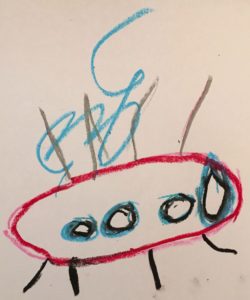 WORD-SHAPE STAGE/SEQUENCE: 2 ½ – 3 years – Organizing shapes, rolling clay and making clay patties. Warning signs – lack of organization
WORD-SHAPE STAGE/SEQUENCE: 2 ½ – 3 years – Organizing shapes, rolling clay and making clay patties. Warning signs – lack of organization
SENTENCE-PICTURE STAGE/SEQUENCE: 4 – 7 years. Pictures with more than one object. Warning signs: things omitted, certain items scribbled. 5 years – figures a little more realistic. Stories can be told. Warning signs– floating images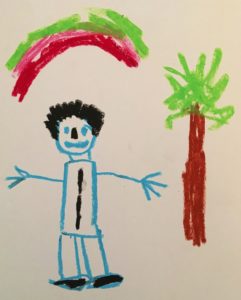
6 -7 years – more realistic colors. Warning signs – parts omitted, floating, stories of danger.
FACT-FANTASY STATE/SEQUENCE: 7 – 11 years. Figures recognizable as boy or girl. Size and organization. Focus on 3 objects (representing mother/father/child triad). 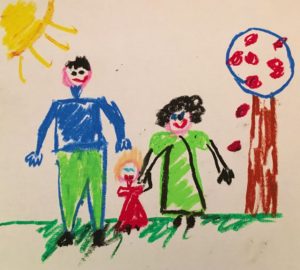
Age 9 -11 -figures more realistic, facing front and/or in profile. Warning signs – some areas regressed, or drawn darkly, omitted. Inconsistent ability in expression and skill. Unrealistic proportions.
Everything we create is a reflection of some part of ourselves. By drawing people and things, our children can master feelings and thoughts. Children’s art can reflect how they are adapting to their circumstances, or the difficulties they are having. Again, it takes more than one drawing to be able to make a conclusion.
WHEN SHOULD YOU REFER YOUR CHILD TO AN ART THERAPIST?
Is there something about the drawings that disturbs you?
Do the warnings signs crop up frequently?
Is your child suffering from emotional stress?
Does he prefer to express himself through art making and creative play?
ART THERAPISTS are trained not only in what art materials may be appropriate, but also how to ‘see’ the pictures your child makes, and how to talk about them with the child.
SOME ART ACTIVITIES KIDS CAN DO AT HOME
- Draw a picture of your family.
- Tear and paste magazine pictures on colored paper.
- Make up an imaginary animal and a story
- Build something with craft sticks or toilet paper rolls
- Make believe food out of play dough and make up a story
- Sponge painting
- Scrapbooking
- Paper bag puppets
- Paper plate masks
ART SUPPLIES TO HAVE ON HAND: tempera or water color paint, wax crayons, oil pastels, sponges, newspaper, colored paper, large drawing paper, computer paper, pencils, different size brushes, washi tape, glue sticks, shoe boxes. You may even like Myra Levick’s book, Mommy, Daddy, Look What I’m Saying: What Children Are Telling You Through Their Art.
HAVE FUN! Allow the mess. Children’s drawings express their feelings. Baby Wipes clean up almost everything!
If you have concerns, please call me at 720-242-9241 for a consult or to make an appointment.
ARE YOU A HUMMINGBIRD?
ARE YOU A HUMMINGBIRD?
Are you a Hummingbird? I’ve decided that I must be. Hmm. What is that, you ask?
A few weeks ago, I was lucky enough to watch a tape of Elizabeth Gilbert, author of Eat Pray Love, giving a talk she calls “The Flight of the Hummingbird: The Curiosity Driven Life.” Gilbert explained that after she had spoken in Australia on the importance of following one’s Passion, she received an email from someone who was bereft about “not having a Passion, not even knowing what her Passion was.” I have been there, myself. Have you?
What is a Passion, and what does following your passion mean, anyway? The last thing a depressed person, or a single parent, or anyone after a long day at work or at home wants to be told is that they are missing something important in life. A passion. Passion has sometimes been too large a word for me. At times, I’d think that if my Passion was artmaking, I would be in my studio 24/7 when I’m not in my office. That I would know what else I am passionate about.
But then I heard Gilbert talk about Hummingbirds. Hummingbirds are here, or there, or there, or back here. Hummingbirds don’t believe that this particular flower is IT, their only source of sustenance. They admire many flowers, smell many beautiful scents, visit and drink from different nurturing gardens.
So, I am a hummingbird. Sometimes I sing. Sometimes I read. Or volunteer in spiritual activities. Or get caught up in a riveting book. Sometimes I paint with oils to make SERIOUS PAINTINGS. Other times I go to my studio to experiment in an art journal. And, often, when I am engrossed, I find that whatever I am doing at that moment, especially in my studio, becomes my Passion. Gilbert calls this curiosity, this having varied interests, being a Hummingbird. I feel comfortable with this. Hummingbirds flit from feeder to feeder, branch to branch, flower to flower. They are beautiful creatures, aren’t they, with glistening, reflective feathers always in motion.
You have probably watched hummingbirds at a feeder. Do you know how much energy it must take for them to be in constant motion? I am not in constant motion, but when I am “flitting” from little passion to little passion, I am using hummingbird energy. I am also telling myself that it is OKAY to flit, to have a variety of interests. I used to tell myself that if I were a SERIOUS artist I would only PAINT. REAL PAINTINGS. Now I give my hummingbird-self permission to PLAY. I mentioned to someone the other day that now that I am playing, I look forward to going to my studio. In fact, I can’t wait.
That is because my hummingbird self has discovered GELLI® plate printing. I had seen GELLI® prints on line, and gave myself the gift of taking a workshop to learn how to do it myself. And then I bought a little GELLI® plate to experiment with. And then bought the paints. And since then I’ve been practicing. And practicing. And practicing. It takes a lot of practice. And fun. And letting go of perfection and immediate gratification. Each print is different. Each layer of color peaks out beneath the next. Oh my, it takes so much work to be a hummingbird. And it’s so much fun!
Are you a hummingbird? Here are some questions to ask yourself.
- Do you have curiosities?
- Do you like to try different things?
- Do you let yourself try different things? Some cooks are hummingbirds.
- Does your house look ‘lived in’? I’ve decided to take that as a compliment.
- Do you have different hobbies, or wish you did? Some benefits of being a hummingbird: It can combat depression. It helps you focus, stay in the present, live in the moment. It adds fun and interest to your life. I’d love to hear where your hummingbird self flits. Please let me know. It may give me, and others, ideas!
ARE YOU A CLOSET COLORING BOOK ARTIST?
THE TOP 5 REASONS TO BECOME AN ADULT COLORING BOOK ARTIST
What is this new adult coloring book craze?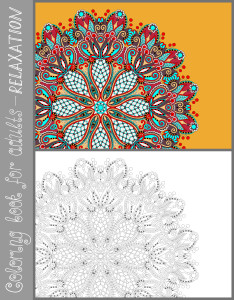
No doubt you have heard of this. You may even be indulging yourself already! I mentioned the “craze” to my neighbor and she told me she’s been coloring in her coloring books for months. Who knew! It’s time to BRING COLORING OUT OF THE CLOSET.
TOP 5 REASONS TO BECOME AN ADULT COLORING BOOK ARTIST!!!!
- Coloring books are meditative. When we meditate, we center ourselves, stay in the moment, slow our heart rate and breathing and relax. We begin to heal our stress.
- When we color, we become instant artists. We allow ourselves to choose colors, create patterns, create. We can please only ourselves! No judges. Our self-esteem grows.
- We engage both sides of our brains. The Left side makes choices – do we want this page or that page, what color shall I select, where shall I make my mark, do I want to use crayons or markers or pencils or water colors? The Right side of the brain colors and creates and plays!
- As we make marks, we de-stress and relax. Ahh, no longer thinking about this busy day. That is the ‘Power of Now’, as Eckhart Tolle says. Our anxieties float away.
- It reminds us of our childhood. It was safe, let alone expected, to stay within the lines. We could also scribble outside the lines! We could sit on our beds, at our tables, and get lost in our own little worlds. Now, we can do it while watching TV or we can unplug. We can sit at the kitchen table or on our beds. We can even color with our kids!
Personally, I recommend coloring books of Mandalas. Mandalas are ‘sacred circles’, and represent our ‘center’ or Self. Mandalas were first publicized by the psychotherapist Carl Jung, who realized that drawing within a circle was healing, allowing our psyches to express whatever is needed.
For that reason, I tell future coloring book artists to look for Mandala coloring books. They are filled with beautifully patterned mandalas that just call for you to fill with them with your colors. You can find them on Amazon.com or your local bookstore. Colorama.com also sells them. I just saw coloring books co-authored by Louise Hay! Each page has an affirmation. What a great way to spend an hour – color and raise yours self-esteem with a Louise Hay affirmation!
You can choose colored pencils, markers, an old fashioned box of Crayola crayons, or even water colors.
The next step, if you are willing, is to trace around a dinner plate, and fill your mandala with your own design. They can be abstract, or they can contain flowers, or people, or whatever your heart desires. And then you can begin your very own art journal. In it you can stencil, stamp, write, paste, paint -and create to your heart’s content.
I’d love to hear about your own experiences. (Scroll down for a beautiful butterfly to color.)
HERE, YOU CAN HAVE YOUR KIDDO BACK!
HERE, YOU CAN HAVE YOUR KIDDO BACK!
I’m serious. How many of you are pulling your hair, silently wondering if other parents go through THIS, asking, “Where did that child I love go?” There is help! Let’s remember, that underneath all the frustration you sometimes feel, you still truly love your child.
THE WHY’S First, we have to figure out WHY your kiddo is misbehaving. All of us behave and misbehave for a reason. We want something to start. We want something to stop. Most of all, we want attention. Children misbehave because they feel like they don’t fit in. I often use the strategies of Dinkmeyer to help parents have their kiddos back. Some of what I say below has been reworded from the book Systematic Training for Effective Parenting.
WHAT ARE THE GOALS OF MISBEHAVIOR
-
I want ATTENTION. The biggest things all children want is TIME, ATTENTION AND MATTERING. How will I know I MATTER to you if I can’t get your ATTENTION, children unconsciously say to themselves.
-
I need POWER to feel like I matter to you. I have to be in control and be the boss of me.
-
I feel the need for REVENGE. Kids who don’t feel loved, or who feel they have been hurt, or maybe even feel they are not loveable, often act this out through REVENGE.
- I have to show you HOW INADEQUATE I am. Don’t expect anything from me.
5. I am ANXIOUS. I need comfort.I’m LONELY. Do something with me.
6. I HATE MYSELF. See? I’m unlovable.
7. Is your child grieving a loss? Sometimes depression will be acted out or in.
Why is it important to understand your child’s goal? So that you can start the ball rolling towards improved behavior. Here’s how you start.
FIRST, NOTICE YOUR OWN FEELINGS AND REACTIONS.
- If you feel ANNOYED and end up coaxing or nagging, then the GOAL WAS ATTENTION. Yup, you gave it to her.
- Did you feel ANGRY, feel your authority was threatened? If you fought, or gave in, his GOAL WAS POWER.
- Are you HURT, and did you want to RETALIATE? Then the GOAL WAS REVENGE.
- Or, did you just feel HOPELESS AND WANT TO GIVE UP? Yup, THE GOAL WAS INADEQUACY.
- Do you, also, feel ANXIOUS and wonder what to do? The goal was FEEL WHAT I FEEL. UNDERSTAND ME.
- Do you sometimes DISLIKE your kiddo, rather than the behavior? The GOAL MAY BE TO SHOW YOU HOW UNLOVEABLE HE/SHE FEELS.
- Do you feel helpless to understand and help your child? The GOAL MAY BE TO EXPRESS GRIEF.
NOTICE HOW YOUR CHILD RESPONDED TO YOU. According to the S.T.E.P. approach, your next step is to notice how your child responds to you.
- A child who seeks ATTENTION may temporarily obey, and then revert to old behavior.
- If your kiddo acts out, or is passive/aggressive, odds are she’s seeking POWER.
- Does your child intensify the misbehavior? It’s REVENGE.
- Or, does she passively respond or not improve at all, she may want to prove that she is INADEQUATE.
- An ANXIOUS child will either calm down or decrease in anxiety.
- A child who HATES HIMSELF will often revert to misbehavior to prove how unlovable he/she is.
- A DEPRESSED or GRIEVING child will either act out in anger or act in, by withdrawing.
SO, WHAT CAN A PARENT DO?
My ‘easy’ answers are IGNORE, WITHDRAW, AVOID and STOP, SOOTHE, LISTEN, PRAISE, COMFORT.
- IGNORE misbehavior and give lots of attention to positive actions.
- WITHDRAW from conflict. Urge cooperation and help in various activities.
- AVOID FEELING HURT. Check your feelings at the door. Love works better than harsh punishment.
- STOP ALL CRITICISM. Be a ‘compassionate witness’. Encourage positive attempts.
- SOOTHE, or remind child to SELF-SOOTHE.
- LISTEN to your child. PRAISE and remind her of her strengths and accomplishments.
- COMFORT and normalize grief. Seek help if depressed mood lasts.
These steps WILL work. But it takes time. If you need help, call me. I can give you encouragement. We can look at specific troubling behaviors. I have lots of parenting strategies. This is just the beginning. Breathe. Smile. YOU CAN HAVE YOUR KIDDO BACK.
Call Claudia Trevithick-Creative Counseling at 720-242-9241 for help.
Push my Buttons, Please
PUSH MY BUTTONS, PLEASE
Once, in an empty parking lot in Louisiana, I found a collection of buttons scattered on the ground. Each had it’s own beauty, and, of course, since they were abandoned, I took some home to add to my button collection. I couldn’t imagine anyone leaving their ‘buttons’ behind.
Buttons have different functions, and all of them are important. And for every function, there is an idiom! In this Part 1, I will talk about buttons that can be pushed.
Yes, buttons can be pushed. Have you ever felt that someone has pushed your buttons? Have you ever been in a relationship with someone who knew just what to say, or what to do, that would make you want to explode? Or, maybe you did explode. Or, perhaps you left a conversation with injured feelings. Or returned a remark with a button push-back of your own.
What happens when our buttons get pushed? Why do we feel so angry, or agitated, or sad, or frustrated? Why do we even have urges to ‘get even’? What usually happens is that our own INNER CRITIC gets injured. This inner critic may believe someone’s remark. If someone calls me ‘pushy’ when I knew I was just being assertive, my inner critic may open her eyes and say “She’s right, you know”. When we allow our buttons to get pushed we can get depressed and want to withdraw.
I rarely allow my buttons to be pushed now. (Notice I use the word ‘allow’.) In the age of computers, laptops, and IPhones our metaphoric buttons can be reprogrammed! There was a time, however, when my mother could actually push several buttons at the same time. Years after I reprogrammed my emotional keyboard of buttons, we were able to laugh (and cry) together over this. I also remember only too well how a co-worker tried her darnedest to push my buttons. When she finally realized I had become a pro at reprogramming my ‘keyboard’, she actually laughed with me and called for a lasting truce. We remained friends who knew and respected each other’s limits. If we don’t set our boundaries, how will others know when they are stepping over them? Our metaphoric buttons help with this.
How do we reprogram our emotional keyboard of buttons?
1. We listen to our gut reaction. When something feels off, our buttons may have been pushed.
2. We own our response. It is OUR response, after all.
3. Check in with our INNER CRITIC and listen to that hurt part of ourselves, usual our ‘inner child’. Comfort that part.
4. And then ask that Inner Critic to question it’s reaction. Use cognitive questioning. Where is the proof? What is the worst thing about it? Really, are you still OK? Yes, you are.
5. Make the conscious decision to release that button of yours that was pushed. That you pushed in response to some one or some event or some doubt.
6. Yeah! You are OK. More than OK. You have reprogrammed your keyboard.
So, I ask you to please, push my buttons. Let me know what you see, what you want. This helps me see myself, and also see a genuine you. Only when I know what you want and who you are on the inside, can I come outside and help you.
If you need help with your buttons, please call me. We can work on your keyboard together!
Claudia Trevithick, ATR-BC
720-242-9241
What Color is Your Mask?
 WHAT COLOR IS YOUR MASK?
WHAT COLOR IS YOUR MASK?
My mask is green today. Do you believe in coincidence? Or, what some call ‘synchronicity’?
A few days ago I had the misfortune of dropping my curling iron. On my face. If this sounds like TMI, let me start with I am fine. Nothing serious.
However, I am now sporting a large dark burn across my cheek the size of a 4” ruler. And I have ‘masked’ that area on my cheek with 4” of a healing green clay.
Why on earth would I choose to write a blog post on this?
First, the synchronicity. Last night I heard a talk by David Sanders, a psychotherapist/Kabbalah teacher, about ‘masks’. About what is between us and the world. He referred all the way back to the Garden of Eden story, where, according to some, Adam and Eve were pure Souls/Beings of Light before they ate from the Tree of Knowledge. They were then ‘clothed’ by God. Clothed metaphorically, he suggested, first with the human skin that covers our Spirit self and makes us human. Then they were clothed with fig leaves/pelts so that they could go into the world of matter and creation. Adam and Eve were ‘masked’. Their inner spirits, their unique selves were covered. I, too, sat there ‘masked’. I began the evening with only a transparent mask of essential healing oils. During intermission, however, I was whisked away by a friend to don another mask, of gooey green aloe vera this time. And this morning an out of town friend emailed me her suggestion of using healing green bentonite clay. I just happened to have some, and so concocted my current ‘mask’, which I shall un-self-consciously wear out to dinner tonight.
Let me describe the love and caring I received when verbally ‘baring’ my soul (my face, anyway) on social media. In response to my request for remedies to add to the MD’s medical model solutions, I received dozens of suggestions, some from people I have not yet met in person. I was touched, and reminded that I am not alone. In times of distress, if we reach out, baring our vulnerabilities, we can find solace from unexpected places.
So, what does it mean to be masked? Some masks actually may draw attention to ourselves. I am not unaware that simply going to the grocery store, out to dinner, or to work, I am baring my (temporary) mask, and what is underneath it.
But what is really underneath it? The human (and clumsy) soul that I am. We all wear masks from time to time. Superficially, I’ve heard women describe their make-up as ‘war paint’. They are, in effect, girding themselves up to battle the day, to arm themselves against feared criticism, to look ‘professional’, or prettier, or more acceptable.
Masks are also our ego, our persona. The self we put out into the world. I know a man who feels he has to put on a fierce, macho self mask at work to defend against perceived threats. I know several women who feel they have to smile their way through trying times. These are all masks of protection.
Some masks cause injury to our souls. When we feel we aren’t good enough without a mask we consciously or unconsciously put ourselves down. Some masks are worn to protect us from an earlier injury. Just yesterday at a restaurant, in fact, I passed a woman angrily guarding her space, complaining that the store manager (purposely) put the recycle bins too close to the coffee dispenser. She was wearing a victim mask, which may have served a purpose earlier in her life, but certainly was no longer needed by her adult self in a grocery store.
Masks have been used throughout human history for spiritual reasons, tribal identification, cultural celebrations, and life stage rituals. Our masks may change with our various roles throughout the day. At work one may wear a mask of being calm and collected, while at home we can ‘take off that mask’ and relax. Or we can be a soothing and patient parent/spouse, and at another time ask for comfort, ourselves. In relationships, we want to feel safe enough to lower our masks, and to provide that same acceptance to our partner and friends.
Sometimes journaling helps us to recognize our masks. Of course, as an art therapist, my ‘go to’ is my art journal. In my office, I often ask clients to paint a mask on the outside to show how the world sees them, and on the inside to express how they see themselves. There are many variations of that exercise. I would love to hear about some of your masks, and how they serve you. And when you feel safe enough to take them off!
Art Therapy for Children of Divorce – IT’S NOT FAIR
Art Therapy for Children of Divorce – IT’S NOT FAIR
“IT’S NOT FAIR’. Have you heard this refrain? If you are a parent, I think you have. If you’re are a parent of siblings, I bet you have.
And, if you are a divorced parent, I’m almost 100% sure that you have heard this refrain. Many times! It can come in many forms. Sometimes, the words arent’ even spoken. But, if you listen really closely you’ll see that they are implied.
But I WANT to go. (It’s not fair.)
You love my sister more than me. (It’s not fair.)
Why can’t I go first? (It’s not fair.)
He gets more attention. (It’s not fair.)
She hit me. (It’s not fair.)
Have you wondered why all this focus on fairness has become so important to your children now? It doesn’t mean that you have suddenly treated one child poorly. It doesn’t mean that you no longer love your children or you aren’t a good parent. And it doesn’t mean that divorcing has catastrophic results for your kids.
IT OFTEN MEANS “MY PARENTS ARE DIVORCED – (AND IT’S NOT FAIR!”)
Borrowing from my own experience as a child, and from what I have learned over the years from my child clients, I have just created an acronym for the word F-A-I-R. (Bear with me here.)
F-FEAR (I am afraid. Soothe me.)
A-ABANDONED (I am sad, left, lonely. Do you love me?)
I-I MUST HAVE BEEN BAD. (It’s my fault. I’m sorry. Love me.)
R-RAGE (I am so angry about this. Please understand me.)
Let’s look at one at a time.
F-FEAR Children naturally feel FEAR because their family is no longer the safe and predictable family it once was. The rules have suddenly changed. Even if mom and dad have been arguing for a while, when one moves out, children feel this change as suddenly unsafe. This can be very scary for children who rely on predictability in their outer world in order to feel safe in their inner world. Children voice fear that they will never see their other parent again. Children are afraid that their other parent will leave them, too. Some kids worry about having enough food. Or a place to live. Or what to tell their friends. Years after the event, I drew a picture of the moment of fear I experienced when I was told that they were getting divorced. I was stricken with fear.
WHAT PARENTS CAN DO: Reassure the kids that you are still family. “Yes, your world “is not fair” now, but mom/dad will always protect them and love you.” Provide lots of paper and crayons for them to draw out their feelings. Hey can draw pictures to put up in the new rooms. You can look for pictures in magazines of different ‘families’ and discuss them. ART THERAPY helps kids express feelings they may keep hidden from their family and even from themselves.
A-ABANDONED. Your child will feel initially abandoned no matter how much love you give them. Or, you love your children but may no longer see them every day. Children under 8 are concrete thinkers and may not understand this Older kids may ‘know’ that their parents must live apart, but their hearts may at first feel that they were not loved enough, or were unlovable.
WHAT PARENTS CAN DO: Reassure, reassure, reassure. Hugs, phone calls, letters. Maintain consistent contact. Agree to let your child and your ex have phone time. Draw pictures with each other. Take lots of photos and turn them into collages by pasting them onto a background. Put notes in their lunch boxes. Keep a mom/dad and me journal: You write a page and leave it on your child’s bed. She writes a page and leaves it with you the next day. An ART THERAPIST can help your child work through feelings of sadness.
I-I MUST HAVE BEEN BAD. Or, it must have been MY fault. Developmentally, children are the center of their universe. Even teens and adults will feel that there must have been something they could have done differently. They will silently ponder the question, WHAT DID I DO WRONG? How can I fix it?
WHAT PARENTS CAN DO: Again, reassure, reassure, reassure. Love them. Tell them that the divorce was between you and their mom/dad and that you both love them so much. ART THERAPY can help you and your child work through lingering shame and guilt in a safe place.
R-RAGE: Rage is a strong word, but children will internally rage against the changes in their families. Against no longer being the center of their universe. Because their illusion of control has been shattered. Because their life has been changed now.
WHAT PARENTS CAN DO: Reflect the feelings you see and hear, and those you intuit. “I see that you are angry about this.” “This divorce has made you really angry, hasn’t it?” Anger is just a feeling and can’t be judged. It is normal, expected, and OK – as long as it is respectful and contained. Children feel more comfortable with limit-setting. House rules are important. Good behavior and job charts help with consistence and self-esteem building. ART THERAPY helps children work out their feelings. They can scribble their anger, express forbidden feelings to a therapist, play it out in a sand tray. They can build new emotional muscles to help them cope in this difficult time.
WHEN TO SEEK AN ART THERAPIST: If any of these IT’S NOT FAIR feelings last too long or begin to seem out of control, consider calling an art therapist. I have worked with children of divorce for over 20 years, and would be pleased to help you and your family. I am passionate about helping children – and moms and dads-restore that healthy balance of love and growth.
MOM AND DAD, children do thrive after their parents’ divorce. Changing families can and do heal. New coping skills help everyone throughout a life time.
If you have any questions, please call me. Or just call me for an appointment. I will be happy to give you a free 20 minute phone consult. call 720-242-9241. CHILDREN DO HEAL FROM DIVORCE
art therapy helps children of divorce
How can I help my child cope with my divorce? This is such a tender and sincere question that every parent undergoing divorce asks.
I can tell you that studies show that children do survive their parents’ divorce. But divorce or separation can be difficult. While you may be grappling with new worries and realities, so are your children, on their own level. I hear many parents wondering about these concerns:
My child’s sleeping pattern has changed.
She is eating more/he is not interested in food.
He shows less interest in his friends now.
Why is she less apt to play?
My kids are fighting more.
Is he having concentrating or completing tasks?
She doesn’t do her homework.
FEELINGS AND BEHAVIORS YOUR KIDS MAY HAVE – AND HOW TO HELP!
GUILT – No matter what, every child will feel they must have done something to cause mom or dad to leave home. (Even adult children will go through this.) Children feel guilt for several reasons. First, we all feel more comfortable with ANSWERS than with questions. The world feels safer if we just ‘know why’ something happened. So, blaming oneself for their parent’s divorce gives our kids an answer. Second, when crises happen, it is common to respond on a more primitive (or earlier) childhood developmental level. A 2 year old thinks that the world revolves around him. So, therefore, he must have done something, said something, or been unlovable enough for a parent to leave him. It is important to reassure children, no matter how many times they ask, that your decision was about you and your spouse, and that there was nothing they could have done to make either one of you want to leave them. In art and play therapy, children can draw pictures about their feelings.
FEAR – An immediate fear children may have is “If mommy left, maybe dad will, too. Who will take care of me?” Some children become overly attached or dependent for a while, needing the reassurance that they are safe and will always be protected. It is OK to reassure them again and again. That is not the same as accepting regressed behaviors over and over again. By drawing a picture of what they are afraid of, children gain power over their fears. One child may draw a superhero to give them courage. Another may draw himself making friends with a monster. In Art Therapy a child can learn to master his fears.
REGRESSION – Your children may repeat earlier behaviors that they had since outgrown , such as needing a night light to sleep, bedwetting accidents, constipation, baby talk. This is expected. However, if it drags on, it is ok to talk to them about it. In fact, please do. You may say to them “Some kids don’t feel as safe when mom/dad isn’t here. Are you worried about this too?” “Do you sometimes just want to be a little child or baby so mom or dad will take care of you?” And then reassure them that you will take care of them even when they show big boy/girl behaviors. Invite them do draw pictures of their feelings.
SADNESS – Like yours, their world has been disrupted. There is a tear in the precious fabric of their life. Something is no longer right with the family. Mom or dad is no longer at the dinner table. Children can miss their absent parent intensely. Even when visiting the other parent, they come to know it is temporary. It is OK to talk about their sadness. Talk in general terms about your sadness that their world is different now. Their definition of family is no longer ‘in tact’, but they will always have a family. It is OK to tell them that you are sad, but be alert for them unconsciously carrying your sadness. Whether you hide your feelings, but walk around looking lost, or cry all the time, our children can sense sadness, and sometimes express it for you by being sad. An Art Therapist can help your child express feelings in pictures, rather than in words. They can then look at the pictures with the art therapist and talk about them.
ANGER
All children will have moody moments. You may ask, “Is this normal 10 year old behavior or something of concern?” However, if moods or changes in behavior persist, it may be time to consult an art therapist, play therapist, or counselor. In art therapy it is safe to scribble out angry pictures, or play ‘war’ in the sandtray to gain a sense of personal power.
SLEEP – Does your child want to sleep with you, or come into your bed, more than before? Of course, there will be special times when it feels good to have those little ones in bed with you. In the long haul, however, a return to their beds is best. For a while, though, they might bring a sleeping bag in and sleep on the floor. Children can draw and then talk about their night time fears. They may be about loneliness, abandonment, or safety.
PLAY – Sometimes kids will feel ‘different’ from their friends, and so want to isolate. It helps to ask them if they know any other kids at school who’s parents divorced. This may normalize it for them. Other children may feel especially lonely, and seek the company of others. Be sure to set up play dates. When your child is visiting you, be willing to drive the distance to pick up friends.
SIBLINGS – Sibling rivalry is almost inevitable in every family! All kids want to feel that they are loved ‘the most’. During a divorce, children often are angry inside, and take it out on the closest person – their brother or sister. Let your children know that you trust them to work things out. Keep house rules posted, as in ‘no hitting’. Children sometimes fight over what is ‘fair’ often because this whole divorce does not feel fair to them. Sometimes seeing siblings together or seeing a parent and child in therapy helps.
SCHOOL – Children don’t often let on that they are having trouble concentrating or having behavior problems. Keeping track of their homework helps maintain consistency. Having to keep a ‘secret’ can be difficult. You may see if their school has a divorce support group.
Whether you handle these life changes on your own, or choose an art or play therapist, your children will learn how to thrive with new coping skills.
If you have any questions about how art therapy can help your child thrive, please call me at 720-242-9241.
Happy Childhood
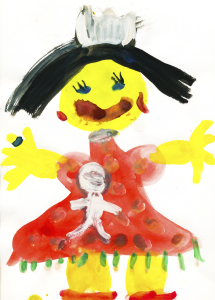 Happy Childhood – Happy Adulthood
Happy Childhood – Happy Adulthood
IT’S NEVER TO LATE TO HAVE A HAPPY CHILDHOOD. It’s the title of a book. And words on a t-shirt. Can we really redo our childhood? And, can we have a happy adulthood? Good questions. I have found that the answer is a resounding YES! to both. We CAN have a happy childhood. I have learned techniques to do exactly that. And then, we can have a happier adulthood.
Back in the 1980’s, I took a weekend workshop in New Orleans called “Homecoming: Reclaiming and Championing Your Inner Child,” by John Bradshaw. When we walked into the huge workshop arena, we saw circles after circles of 8 chairs, with a tissue box in the centers. Uh oh – I saw that we were there to learn by working on ourselves. And we all earned a t-shirt that said, “It’s Never Too Late to Have a Happy Childhood”. I wore that t-shirt as a sleep shirt for years! One of the most powerful exercises that weekend was to take turns sitting in the middle of the circle, eyes closed, listening as each member embraced us, whispering in our ear, “I’m so glad you were born”. Powerful!
What happens at a therapy appointment?
CAN YOU HEAR ME NOW? OR, WHAT IS MY THERAPIST THINKING ABOUT?
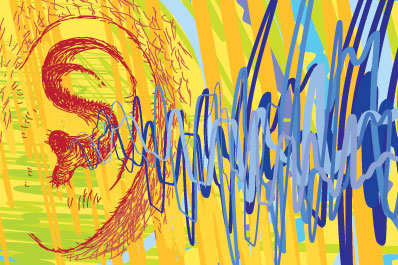
Like the phone service commercial on television in which the customer asks, ‘can you hear me now?, every new therapy client is also wanting to know “Can you “see” me now?” I want every client of mine to know that I both hear them and see them. I will see you sitting before me. I will understand that you might be particularly anxious as you sit there in my office. If it is your first session, we will be getting to know each other. You may want to ‘test the waters’ to see how safe you feel. I certainly understand that. Through the past 24 years in private practice, I have become particularly sensitive to the courage it takes to actually show up, to be there. You may feel self-conscious. Perhaps this is your first time in therapy and you don’t know what to expect. You may fear being judged. You may even be silently asking yourself, “Now, why am I here… Maybe I don’t need to be here… How do I know this therapist can help me?…Having been on both sides of the ‘couch’, I can tell you that I have had and have heard all of these thoughts. They are all normal. And, I will want to hear them. (more…)






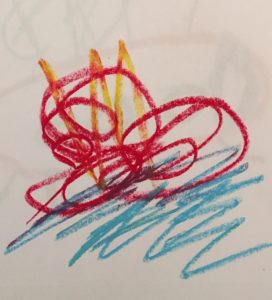
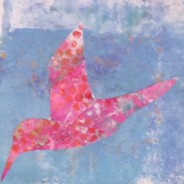
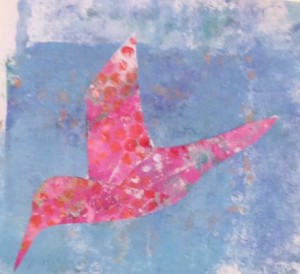
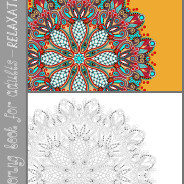
![HiRes[1]](https://www.trevithickcreativetherapy.com/wp-content/uploads/2015/10/HiRes1.jpg)

